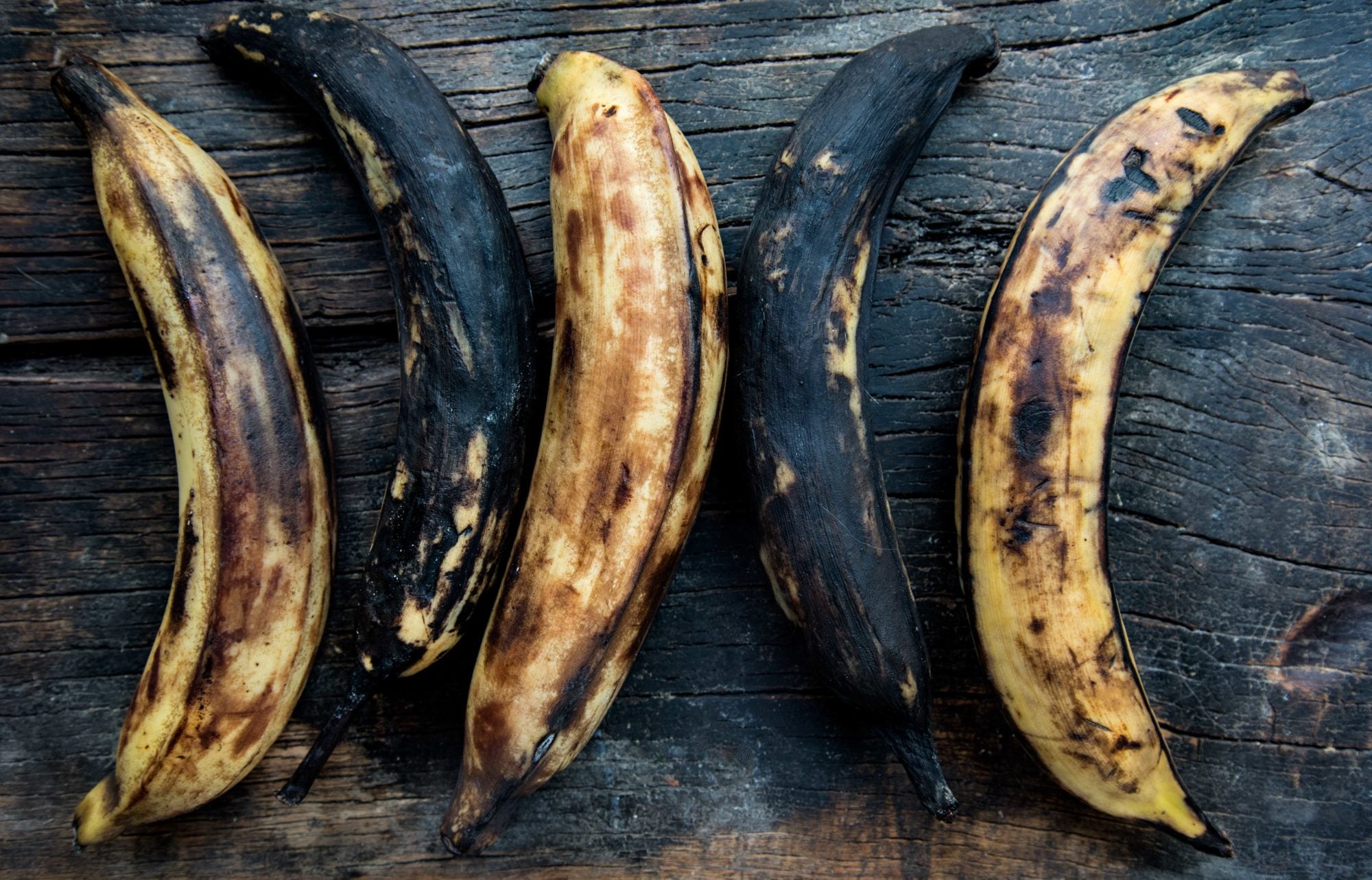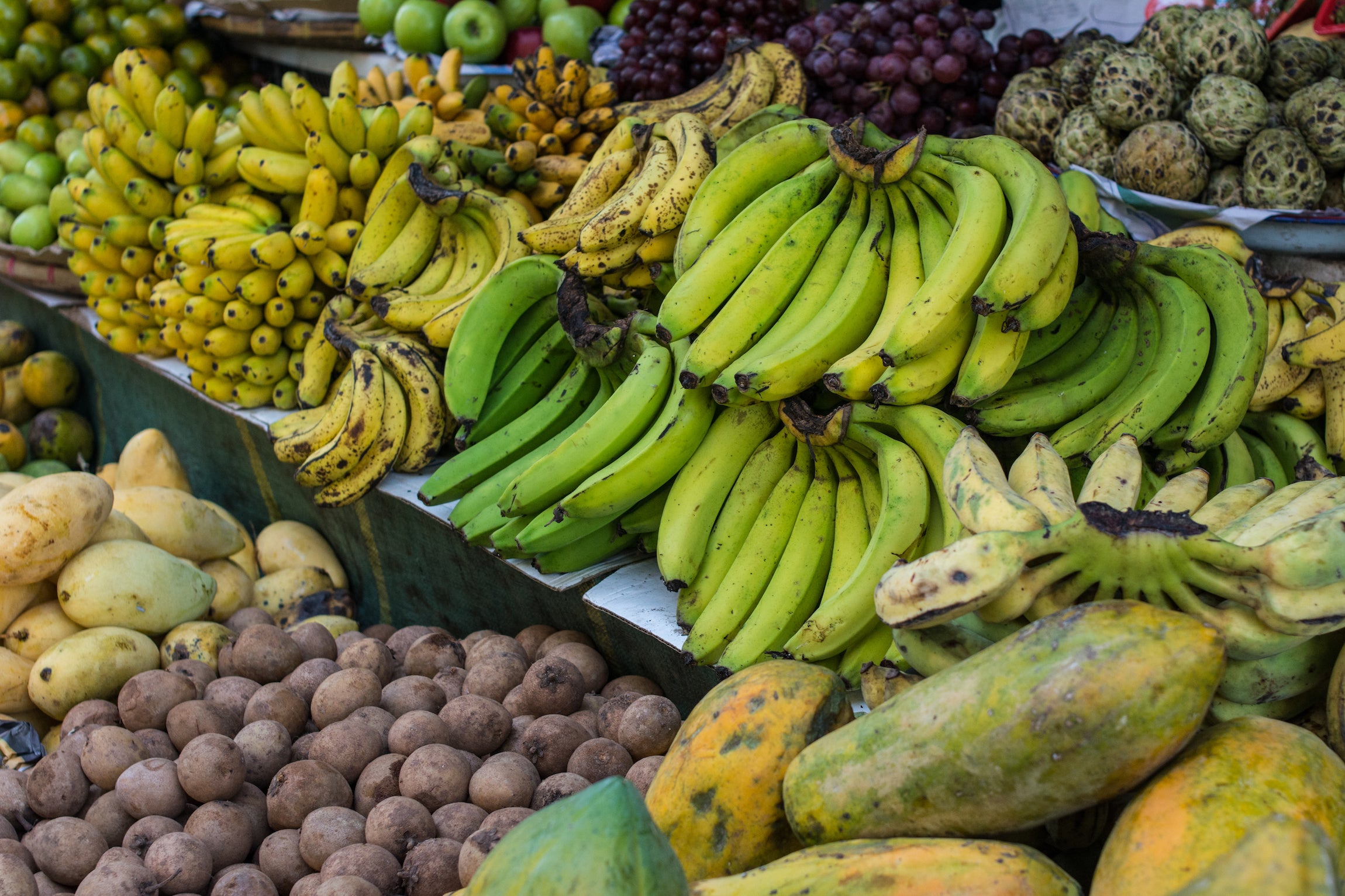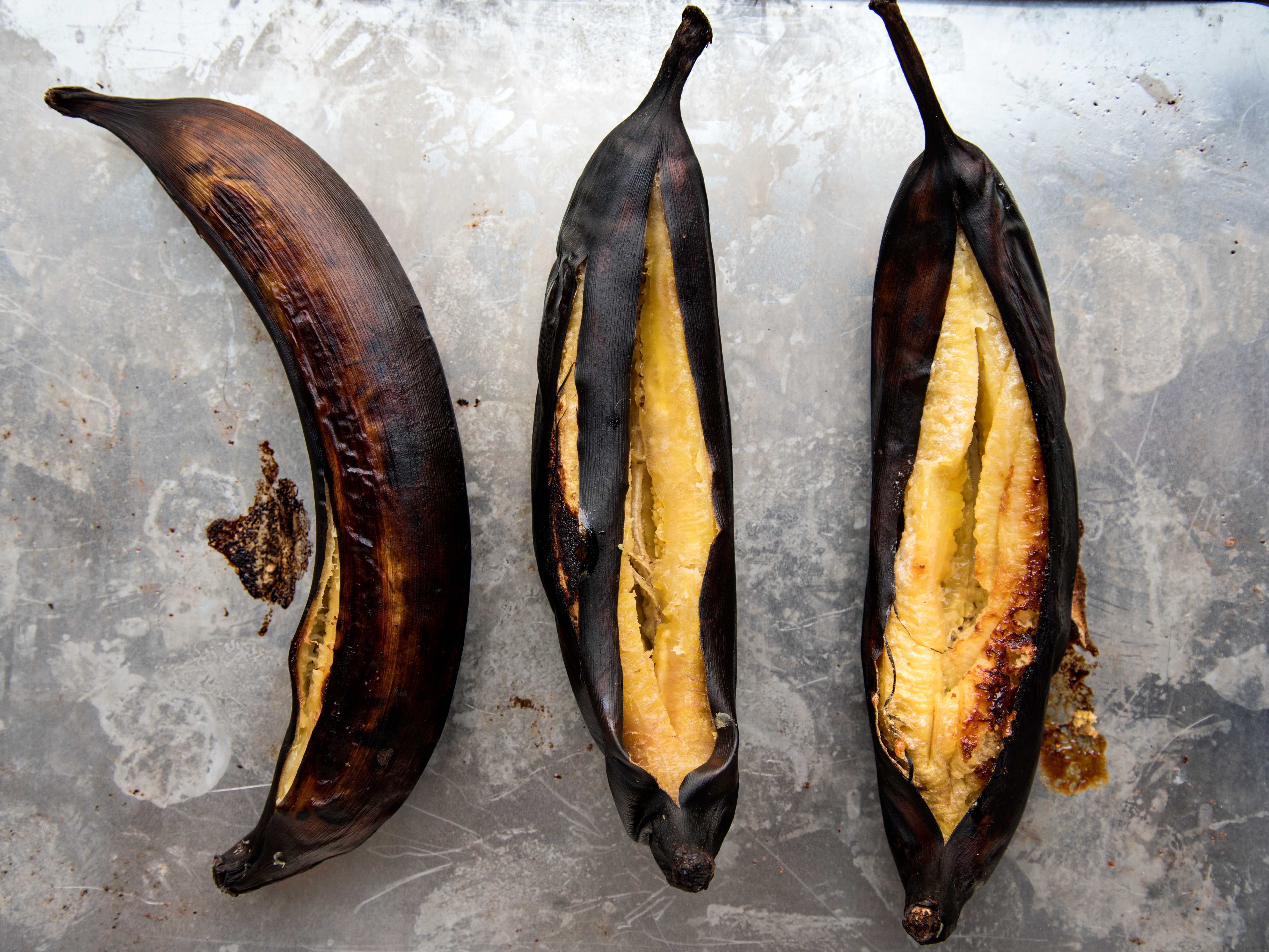
When fried, they’re a restaurant staple. But when roasted, they’re a homey comfort.
For about a month each winter, I rediscover the reassuringly filling comforts of baked potatoes and sweet potatoes. I’ll buy them by the cheap grocery-bag-ful and roast them for dinner night after night, topping them with a hot honey butter, like Alison Roman does in her cookbook Dining In, or with yogurt and diced pickles, like Brooks Headley does at Superiority Burger. And then, inevitably, I reach a point of tuber burnout and begin to wish any other fruit or vegetable were as easy to roast on its own to transform into a self-contained dinner.
In their book Provisions: The Roots of Caribbean Cooking, Michelle and Suzanne Rousseau offer an answer for your oven: ripe plantains. As they explain, starchy fruit and vegetables of the Caribbean, like breadfruit, bananas, pumpkin, and especially plantains, are often eaten simply roasted or grilled over an open flame and topped with butter and salt. The fruit has the heft and starchiness of a potato, but with a gentle, tropical acidity.

Most grocery stores in my Brooklyn neighborhood carry green plantains—the fruit at its starchiest, least ripe stage of life. These are the type that are sliced paper-thin and fried to make salty plantain chips. A few grocery stores carry the still-starchy, but slightly softer plantains that are often referred to as “turned.” An 1893 book called The Jamaica Cookery Book, which the Rousseaus cite, says that turned plantains “go excellently well with salt fish or eaten boiled or roasted with butter put inside them.” The Rousseaus like to peel and grill them as a barbecue side.
Like avocados and bananas, you can buy plantains at either of these stages and let them ripen in your kitchen. “If you want it very ripe, wrap in newspaper and leave in a cupboard under the sink for a few days,” the Rousseaus tell me. “We know that by the time a banana has brown spots, it usually means it’s time to make banana bread, but plantains will remain firm and will have a slightly wet, slippery feel once peeled and sliced.”
When they’re ripe, the skin will have turned from a mottled yellow to mostly black. The fruit will have a creamy, soft texture and a bright, fruity taste that’s at home alongside some jerk chicken, or caramelized in butter and brown sugar and eaten with a scoop of ice cream.

One of my favorite arepas at the Williamsburg location of Caracas combines Guayanés cheese, avocado, and juicy fried ripe plantain. On a sandwich from Tina’s Cuban in midtown Manhattan, wedges of ripe plantain are tucked between bits of shredded fried pork. Fany Gerson of sweets shop La Newyorkina tells me that her menu will soon feature fried-to-order plantains served with cajeta, a goat’s-milk caramel sauce.
The best thing about treating them like sweet potatoes is that they can be cooked right in their thick, leathery skins without any peeling, cutting, or wrapping in aluminum foil. Once cooked through, you just peel back the skin to reveal the soft, creamy flesh.
In their recipe from Provisions, the Rousseaus top the plantains with chopped avocado, lime juice, crunchy peanuts, and a spicy pepper compote. They also recommend trying a combination of olive oil, salt, fresh herbs (like basil, cilantro, and mint), and chèvre, or grilled onions, tahini, fresh mint, toasted pepitas, and pickled chiles. Or if your refrigerator contents are limited, you can opt for hot sauce and cilantro, like I did recently, or keep it classic with butter and salt.